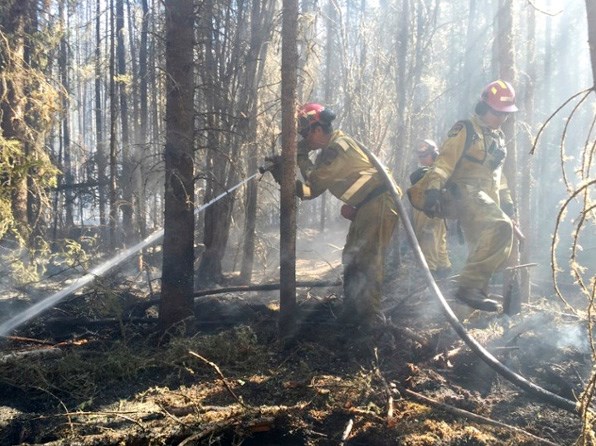After many days of fast growth under dry conditions, two large wildfires in the Lac La Biche region are being contained. A 32,000-hectare fire on the Cold Lake Air Weapons Range is now classified as being held.
After many days of fast growth under dry conditions, two large wildfires in the Lac La Biche region are being contained.
A 32,000-hectare fire on the Cold Lake Air Weapons Range is now classified as being held. More than 300 firefighters continue to battle the blaze.
Meanwhile, a 3,000-hectare fire to the north of Lac La Biche is classified as under control.
The distinction between being held and being under control lies in how long the fire’ s growth has been contained for, and whether or not there are any “islands” of fire fuels like unburnt trees that could threaten the perimetre, says Leslie Lozinski, information officer for the Lac La Biche Forest Protection Area.
As large as the fires are, they’ re not unusual for this region.
“We haven’ t had a lot of large fires in our area in a long time. The question is not if we’ re going to have large fires. It’ s when we’ re going to have large fires,” she said.
In the past month, the drier-than-usual conditions have been just right for wildfires to start and then spread quickly.
In the case of the two wildfires east and north of Lac La Biche, the blazes grew very rapidly, prompting nearby oil and gas plants to be evacuated. Some, like Cenovus Energy’ s Foster Creek facility, have since returned to normal operations.
Additional firefighters from Ontario and British Columbia were called in to help when Alberta, facing a very high number of active wildfires, found itself short of resources.
“We’ re really fortunate that we could import crews from Ontario and B.C. when the Alberta crews were maxed out,” said Lozinski.
Now that the wildfires are being contained, she says it will likely be a “long, intensive process” to fully extinguish them. Crews will continually monitor the fire sites for “hot spots” and address the ones they find as needed.
“It’ s like putting out a gigantic campfire,” she said, adding that the ground and debris need to be soaked, the ashes and soil need to be stirred and then it all needs to be soaked again, making for a “very slow but very methodical” process. “I think that we’ re in it for the long haul,” she said.
After weather conditions improved last week-from a firefighting standpoint, at least-a fire restriction for the Forest Protection Area was downgraded to a fire advisory, meaning small, controlled campfires are allowed but fire permits remain suspended.
“Most of the area didn’ t get more than a few (millimetres of precipitation),” Lozinski said. “We still want people to be really diligent in the forest. Just bear with us until we can get some relief from Mother Nature.”
